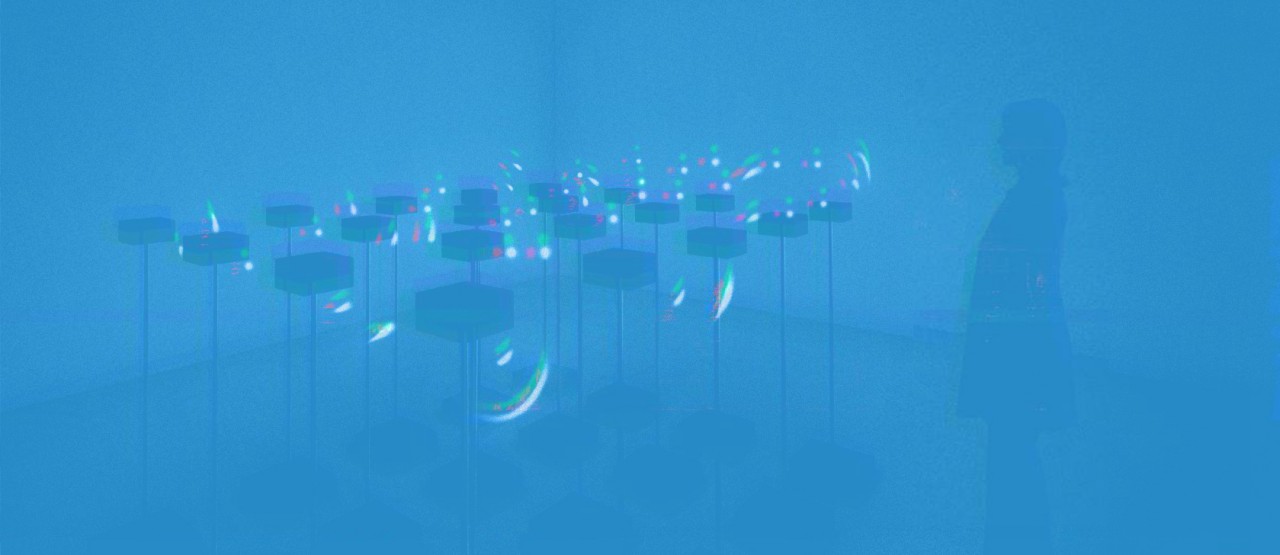
Gabey Tjon a Tham – Red Horizon
Date
25 September 9/18/14 12:00 - 15:00
25 September 9/18/14 20:00 - 00:00
26 September 9/18/14 12:00 - 00:00
27 September 9/18/14 12:00 - 00:00
28 September 9/18/14 12:00 - 23:00
Venue
Blue Building
Module
works
Country
NL
Year
2014
Co-producer
TodaysArt
‘Red Horizon’ is a kinetic light and sound installation by Gabey Tjon a Tham consisting of double pendulums that form a plane of white particles in a three dimensional space.
Each arm of the pendulum contains a white light and a small speaker that moves along the unpredictability of the mechanism to create both order and chaos. The emergence of complex behavior – a phenomenon that occurs in for example a swarm of individuals which, through simple rules, display complex behavior, patterns and intelligence as a whole – is taken as a starting point. The installation lingers between the natural and mechanical, creating entities that give a feeling of an eerie, unknown, living and breathing presence. Certain movements evoke a sense of autonomy, as if they have their own nervous systems with thoughts, even a sense of humor. They evolve like a stream of images that swell progressively in time, in which old and new constructional elements create unexpected events. Light, sound and movement guide their presence as music with physical dimensions, becoming an abstract automatic ballet.
‘Red Horizon’ is a co- production of TodaysArt and Museum of Transitory Art and was realized with the support of Stroom Den Haag.
Gabey Tjon a Tham is an installation artist working with a variety of media and art forms. She holds a bachelor of Fine Arts (Royal Academy of Art) and a Master in ArtScience (Royal Conservatory of The Hague). Her work consists of re-contextualized excerpts from reality that acquire their form within an architectural space. Midst this dialogue the perceiver is reverted to a process of reflection on its own thoughts, memories and dreams. Within this spaceless – timeless sanctuary the elements of the piece develop new relations to each other and their surroundings.


























































